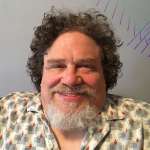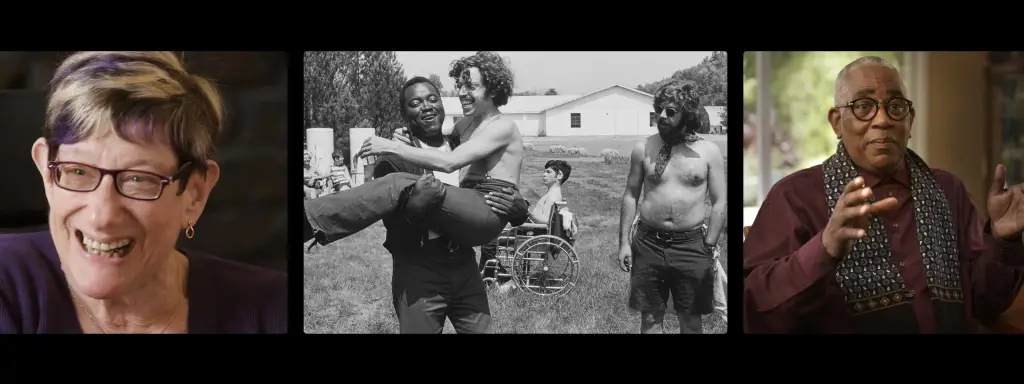
In the 1970s, disabled teenagers faced a world of social exclusion, isolation, even institutionalization. Camp Jened, the ramshackle summer camp run by hippies that is the heart of our documentary Crip Camp, exploded those confines. In its freewheeling, radical atmosphere of equity, a community was born, a community of campers of different disabilities and backgrounds, and their disabled and non-disabled counselors and staff.
This piece is part of Disability Demands Justice, a dynamic, ever-evolving hub to deepen our understanding of how disability intersects with social justice.
It was a community that would endure until today, and transform not only the lives of those who were a part of it, but also the very world itself. “Jenedians”—including international disability rights icon Judith Heumann—became a critical part of the movement for disability rights that ultimately resulted in the Americans with Disabilities Act (ADA) being signed 30 years ago.
We chose to center disability community and culture in our telling of this history, showing how the cultural practices developed at Camp Jened to achieve inclusion—like having the patience to listen, trusting others to be the experts on their own needs, and prioritizing accommodations like sign interpretation so that everyone can participate—became critical to the success of the 504 sit-in. This landmark event was the epic, 28-day takeover of a federal building in 1977, leading to the implementation of the housing, education and welfare 504 regulations that said that people with disabilities could not be discriminated against in any program receiving federal financial assistance.
Accessibility Statement
- All videos produced by the Ford Foundation since 2020 include captions and downloadable transcripts. For videos where visuals require additional understanding, we offer audio-described versions.
- We are continuing to make videos produced prior to 2020 accessible.
- Videos from third-party sources (those not produced by the Ford Foundation) may not have captions, accessible transcripts, or audio descriptions.
- To improve accessibility beyond our site, we’ve created a free video accessibility WordPress plug-in.
The inclusive organizing principles modeled in the disability rights movement of the 1970s—and their awareness of what today we would call the intersectionality of disability—also supported an extraordinary level of cross-movement solidarity that quite literally made the 504 sit-in possible. Because of the leadership of Brad Lomax, a disability activist and Black Panther, the Panthers delivered three meals a day to the sit-in participants, citing their wish to support a shared mission of a better world. The Butterfly Brigade of the Castro, the owner of a local lesbian bar, Glide Memorial Church, the local unions—all of whom had disabled friends or allies—also offered critical support. We saw something extraordinary in this story that could serve as a roadmap or a model for social justice movements of today.
More from Crip Camp
As our film began to find powerful allies and a global platform in our partnership with Higher Ground and Netflix, we saw an opportunity to connect the solidarity and intersectionality of the disability rights movement of the past to the disability justice movement of today. The disability justice movement centers the leadership and voices of black, indigenous, and people of color and other multiply marginalized disabled people.
We were extremely fortunate to work with two of its leaders as our impact campaign directors: Stacey Park Milbern, who helped found the movement in 2005 with other members of the disability justice collective, and Andraéa LaVant. They immediately saw Crip Camp as a platform to build cross-movement solitary with disability justice, inspired by the past and informed by our immediate present.
When COVID-19 changed our film and impact campaign rollout plans, they did what leaders in the disability movement do best—they adapted, invented, designed and created in response. Recognizing a need to establish an emergency fund for creatives and activists who are disabled black, indigenous, and people of color, they began to strategize and establish a fund in partnership with Color of Change to bring two intersectional movements together in powerful solidarity.
Andraéa and Stacey also wanted to creatively support, nurture, and provide a platform for disabled creatives and activists with passion projects, so they established the Crip Camp and Adobe Fellowship in honor of Ki’tay Davidson, who died in 2014 at 22. Ki’tay was a disabled trans man who described himself as “a believer in love and collective liberation,” mobilizing multiply marginalized communities to find commonalities and challenge all forms of oppression.
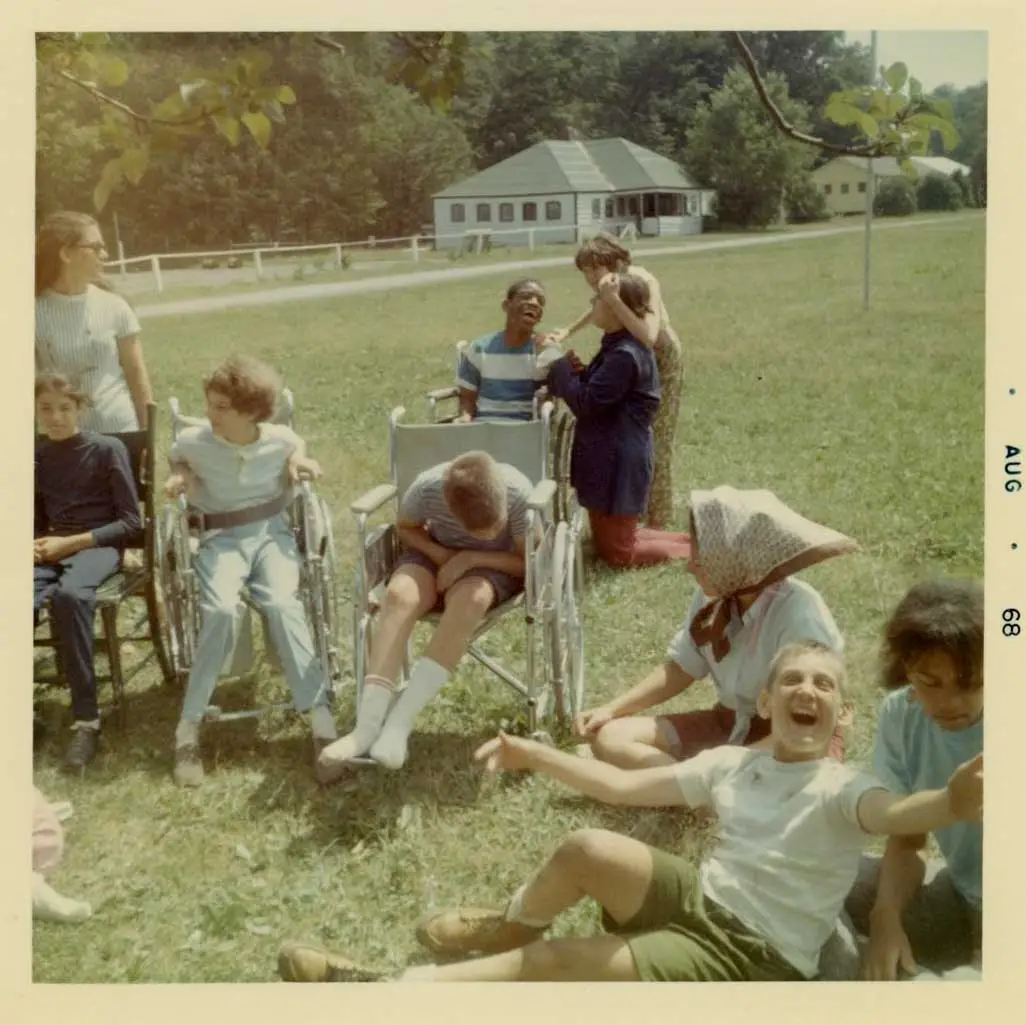
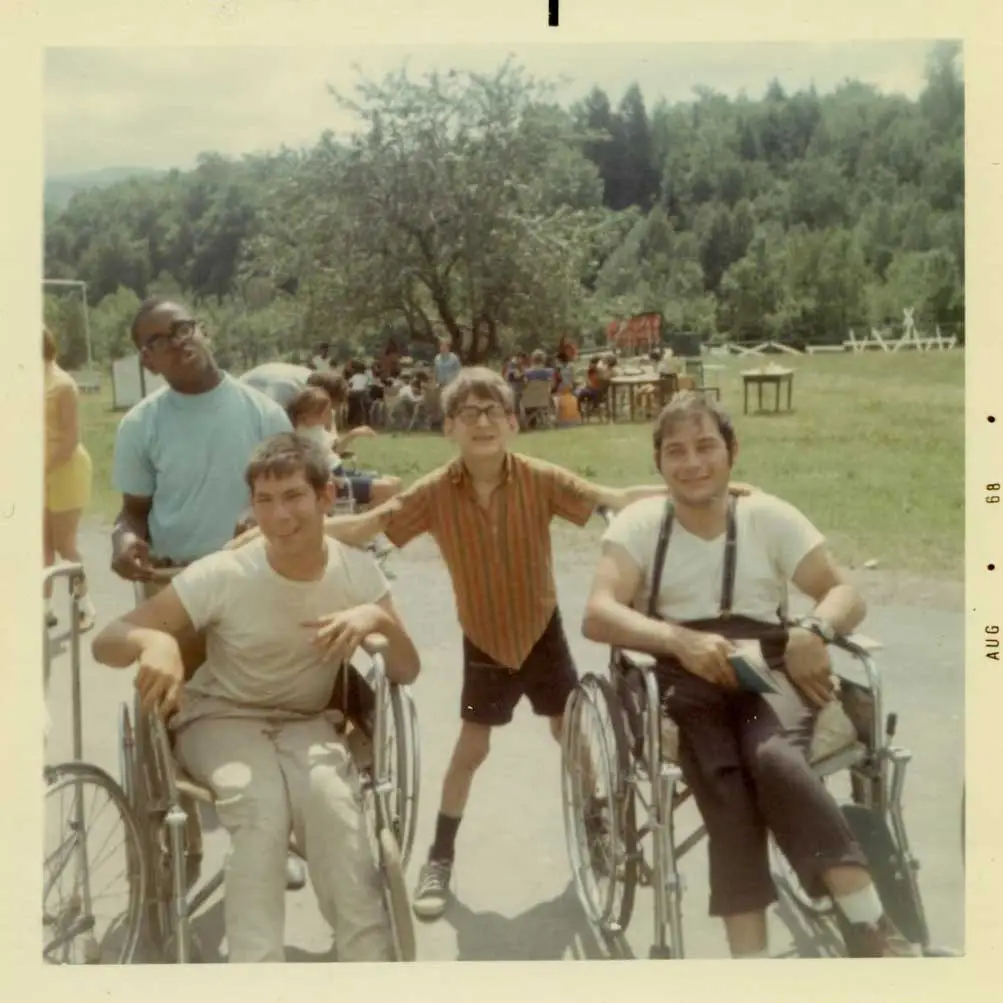
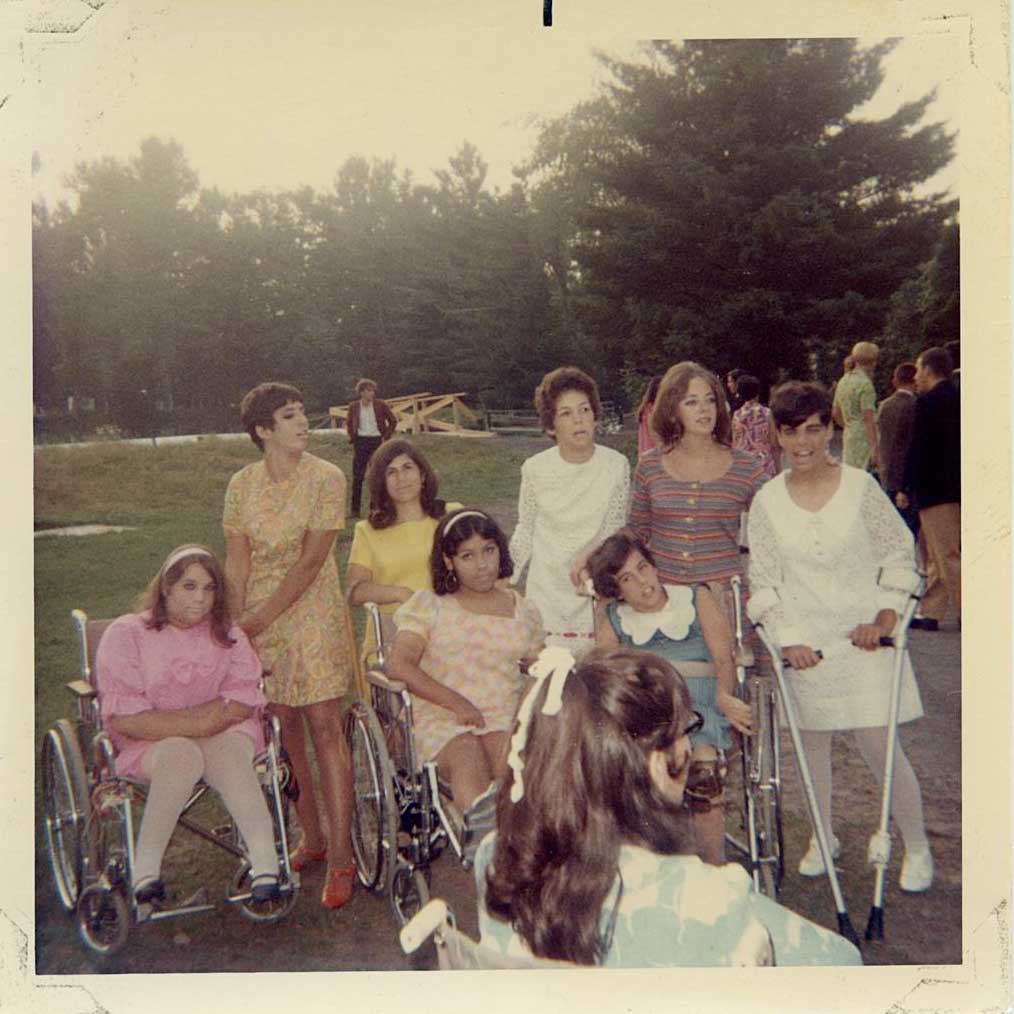
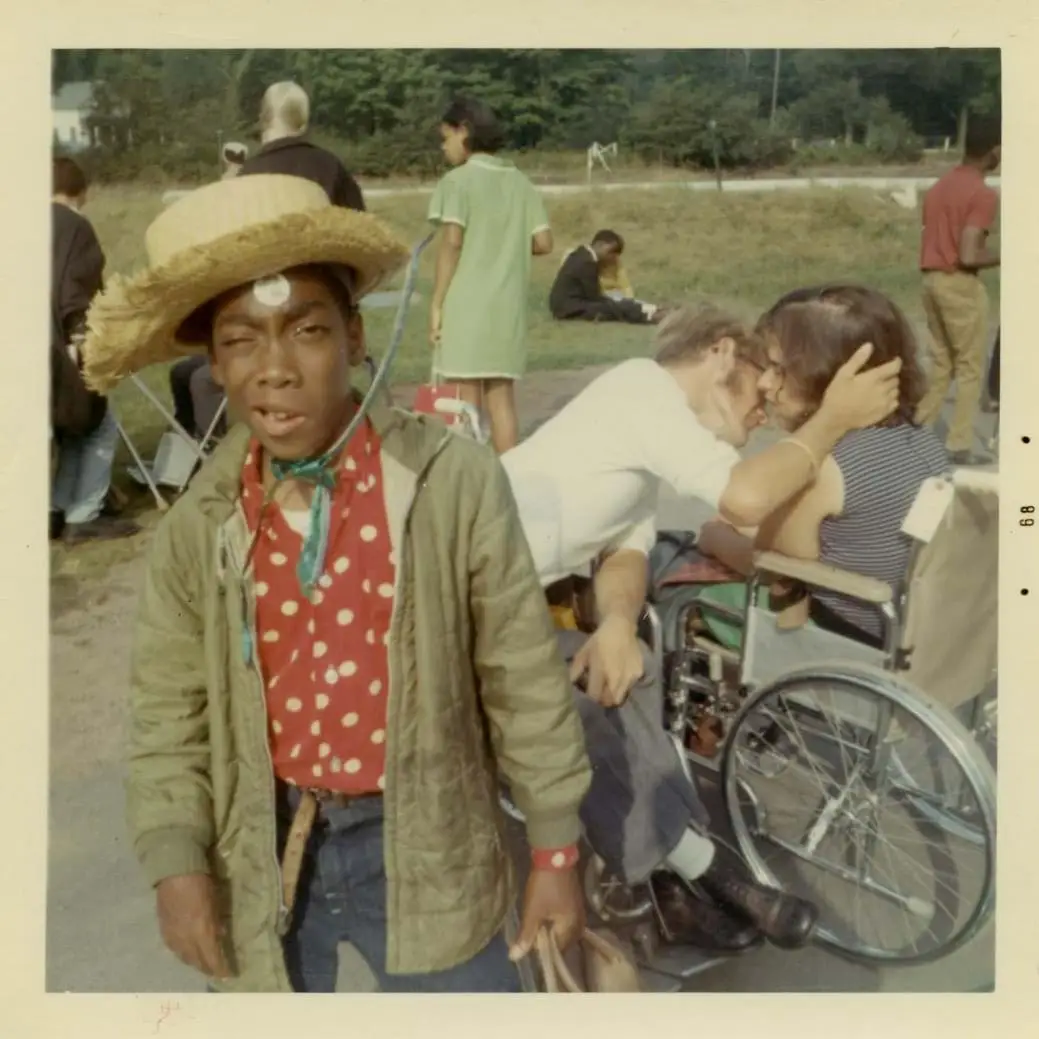 Photos courtesy of Crip Camp
Photos courtesy of Crip CampThe amazing recipients of the first fellowship were announced Sunday, July 26, on the 30th anniversary of the signing of the ADA, at a virtual Crip Camp experience that Andraéa and Stacey designed so that disabled cultural, academic, and advocacy luminaries could teach and collaborate with folks from all over the world. The virtual experience, which runs every Sunday this summer, had an initial goal of 1,000 registrants. To date, we have already had 9,000 people from across the globe participate, showing the critical need for this kind of community gathering and knowledge-sharing.
We were all devastated when Stacey passed away, the same weekend that the virtual experience launched in June. But we feel her spirit alive and her vision being realized as Andraéa continues to lead the work and as the community grows and expands. People with disabilities are the world’s largest minority group and a vital part of every community, so they should be a critical voice in every movement. Our vision is that leaders, advocates, and organizations working on social justice and beyond will increasingly see the value in being part of this community and work with us towards disability justice.

